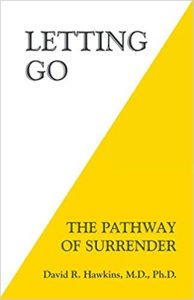Introduction: The journey of understanding surrender
It took me a long time to understand the true meaning of surrender. Up until early sobriety, I don’t think that I ever heard of or even was remotely familiar with the concept of letting go instead of fighting or opposing whatever came my way. If I didn’t agree with something, something went wrong, or someone argued with me, I yelled, disagreed, or sulked about whatever it was. Surrendering or giving in in any way just wasn’t something I or anyone around me seemed to ever do.
The first time I ever surrendered without an agenda, or without trying to control the outcome, was the moment my friend Tunde gave me the AA number on 23rd of July 1998. That day became my first day of sobriety over two decades ago. It was then that I gave up and surrendered to something unknown, a plan that I had no clue what it was or what it would be.
Article Voiceover
Resistance was my default setting: Struggling in early recovery
But still, in early recovery I didn’t really act any different than before. I continued to resist. It was like a subconscious default setting. It was how I operated. If someone asked me to do something, I didn’t want to do it. If someone had an opinion, I didn’t want to agree. If something didn’t go my way, I would do whatever I could – yell, cry, throw tantrums – to get what I wanted. Since then, I have discovered that it was really a way to feel heard. If I made a fuss, then people would notice me.
Living like this was so much work!
As the years went on, what I learned in AA slowly changed how I perceived and reacted to life. My idea of surrender started to shift. First, I learned about Step Three, and at first, I really had trouble understanding what it meant. Step Three reads:
“Made a decision to turn our will and our lives over to the care of God as we understood him.”
Step 3, 12 Steps of Alcoholics Anonymous
It is a basic teaching of surrender, yet so difficult to actually put into practice. I learned throughout the years that it is really crucial to have some idea of what God means to you before you can actually apply this principle. I didn’t. But I tried anyway; I was determined. And I just kept on moving forward and trusting that I would discover how to turn my will over to God one day.
Learning simple tools: the 24-Hour Rule and Acceptance
We were also taught the 24-hour rule in AA: when upset, wait 24 hours to respond. For example, if you get an email that is upsetting, wait 24 hours before sending a response. By using this simple rule, so much friction and negativity can begin to disappear. It took time, but finally, this was a tool I could use and understand.
Also, at meetings, I continued hearing one of the most important teachings of them all, the words: “acceptance is the answer to all our problems today” (Big Book 47). Just as with everything else, it took me a long long time to understand and put those words into practice. Even now, when I no longer am as active in AA as I used to be, I think about those words each day.
The Turning Point: A Moment of Realization
At about six years of recovery, I had a moment that I could call my bottom in control and lack of acceptance. I had been dating a guy for about two months when he broke up with me. I went into hysterics and sobbed for almost 24 hours. So much that he was afraid to ask me to leave. After 24 hours, he finally said, “I can’t do this anymore!” At that moment, I realized that I was crying to control him and get him to take me back. I wasn’t crying because I was heartbroken. The funny thing was, our relationship was really not very good.
This experience was eye-opening for me, and in the years that followed, I started understanding more about how my own resistance was really the culprit in so many of my life difficulties.
The Journey Continues: Building Spiritual Awareness
The more time I spent building my spiritual and meditation practice, the easier it became for me to have an awareness of my behavior, especially my reaction to life. Of course, the default setting, the resistance still lived in me, but I learned to pause and become more attentive of my thoughts and my actions.
As the years went by, my outlook shifted, I didn’t have to always be right; I didn’t have to always have my way. I could accept and move on. I no longer wanted to try to manipulate or control anyone with my behavior.
The Book that Changed Everything: Letting Go, The Pathway of Surrender by Dr. David R. Hawkins.
But still, it wasn’t until many years later that I came to fully understand that in fact surrender is a state of being rather than something that I had to consider with my thoughts and with my mind.
It was about 5 years ago when a book showed up in my Amazon suggestions that completely changed my life. It became my Bible. The book was Letting Go, The Pathway of Surrender by Dr. David R. Hawkins. I read it, and the concept made so much sense to me. Intellectually. I still couldn’t apply the principles without effort. I read it over and over until finally, my children started teasing me, “Oh mom, are you reading that yellow book again!?”

The Final Discovery: Surrender is a state of being
For some reason, I kept going back to it, and in the end, I must have read it at least 13 times. That’s how long it took me to assimilate the teachings into my entire being, into my subconscious and unconscious mind. Grasping the concepts in a way that they were no longer actions or thoughts, they became a part of my being.
Dr. Hawkins explains that in order for true surrender to happen, one has to recognize our own emotions fully, and let our feelings live their life and have their process. When a negative feeling arises, we have to consciously allow the feeling to surface and be acknowledged. The tricky thing here is to JUST observe those feelings without trying to fix or act or discuss them in any way. It is key to let the feelings be, let them live their life span, and live out the needed process. The most important thing in this practice is that if something bothers you and triggers you, let it be.
Unraveling the Cobwebs: Understanding Emotional Resistance Within
It was through my meditation practice that I was able to be ready for the process. Earlier on, my emotions and feelings were like cobwebs and clutter in an old attic, and it would have been impossible for me to single out one emotion to observe and have an awareness of. But after years of practice, I was able to treat each emotion as an object, which I believe was key to my practice of surrender.
It was also important for me to reflect on why negative emotions and resistance existed within me. I would ask myself things like; what is it within me that is resisting right now? What is it that is triggered? I was able to witness the resistance, and become aware that it was actually happening. These days, I become immediately aware of this resistance in my body. I can actually feel resistance. Once this awareness is there, there is an opportunity for a shift. Once the resistance is recognized, I could begin the process of surrender.
The process is hard physical work and takes time and practice. I started with surrendering smaller things and slowly moved on to the larger issues. For example, when I would be triggered and upset, sometimes I would force myself to sit down and just say, “I am angry now.” By saying how I felt out loud, I allowed myself to feel and bring awareness to my emotions. Gradually their hold on me would dissolve.
The Inevitability of Emotional Dissolution: They Always Go Away
What I also discovered, as Dr. Hawkins describes, is that no matter what it is, negative feelings will reside; they always will. Depending on the severity of the emotions and how deeply ingrained they are in our unconscious, less stuck emotions dissolve more quickly. However, more deeply buried emotions can take days to dissipate. But – the emotions always do dissipate. This concept has really stuck with me. I’ve practiced it so much now that I know it to be true. Now, I expect it. In fact, most things are surrendered even before they enter my conscious mind. It’s like a muscle that has been worked over the years; surrender happens automatically. At times, it takes more conscious awareness, but there is a knowing, a trust, that I really don’t have to do anything. Whatever is supposed to happen has already been planned out, and I have no control over it.
Surrender: the ultimate door to Awakening
The surrender is already there within me, and it has become the natural state I live in. And through this process, I have finally grasped what Dr. Hawkins claims: surrender is the ultimate door to awakening.

Meditation has paved the way for me to practice this teaching, and it also created the foundation I needed to trust the surrender process. In meditation, we discover that beyond all of our emotions and negative feelings lies and energy, a loving force that holds us and nurtures us. Without this piece, I don’t know if I would have understood how to let go. Now, I have something to surrender to and faith that everything will be alright and I will be taken care of. I understand that that energy had been there all along, guiding me, whether or not things turned out the way I wanted.
I could have never imagined that surrender would be the ultimate teaching for me – a state of being completely free and unattached to the goings-on of everyday life. And it’s not like I am detached and aloof; instead, I am more present and engaged than ever before. For me, surrender results in a place of presence that I can only describe as a feeling of home. It is a connection with the soul that I have been looking for my whole life, and I found the key in the practice of surrender.







